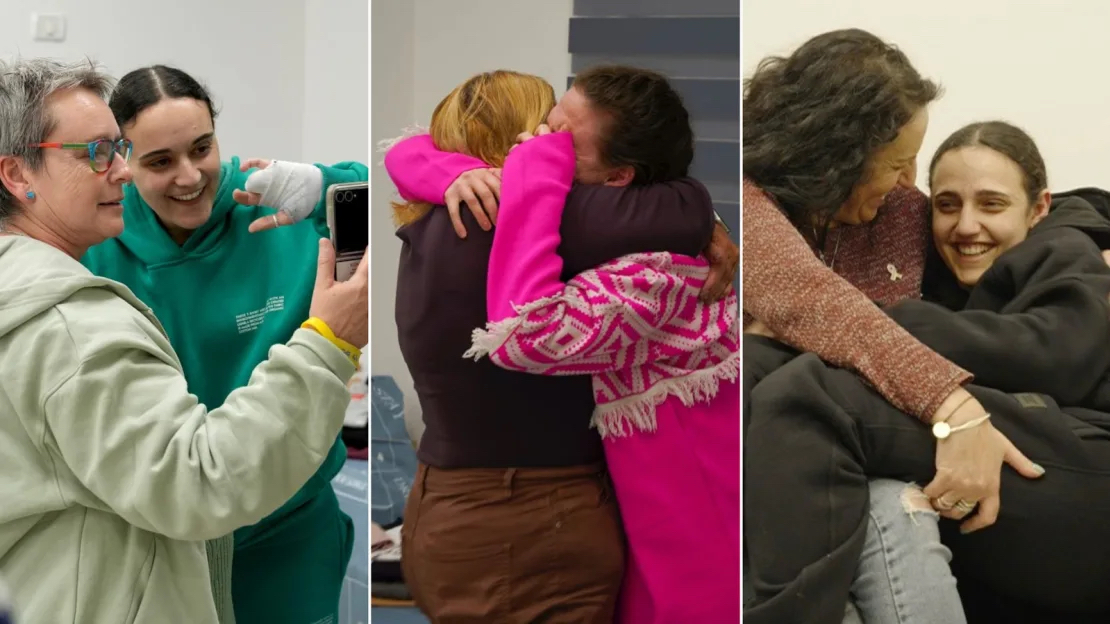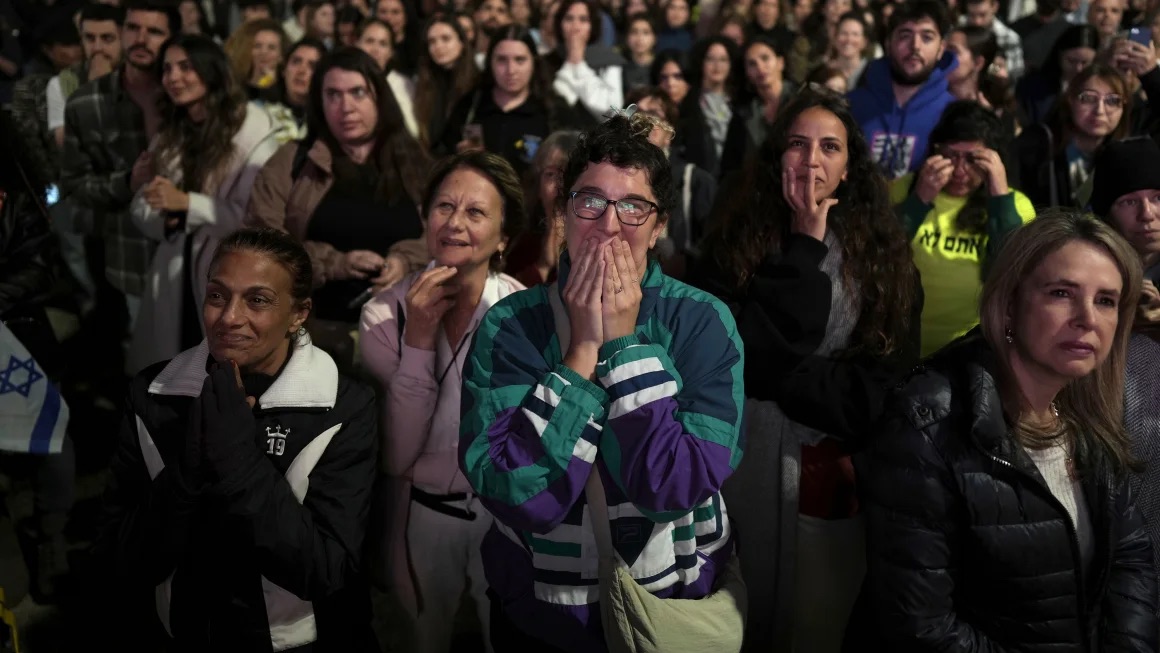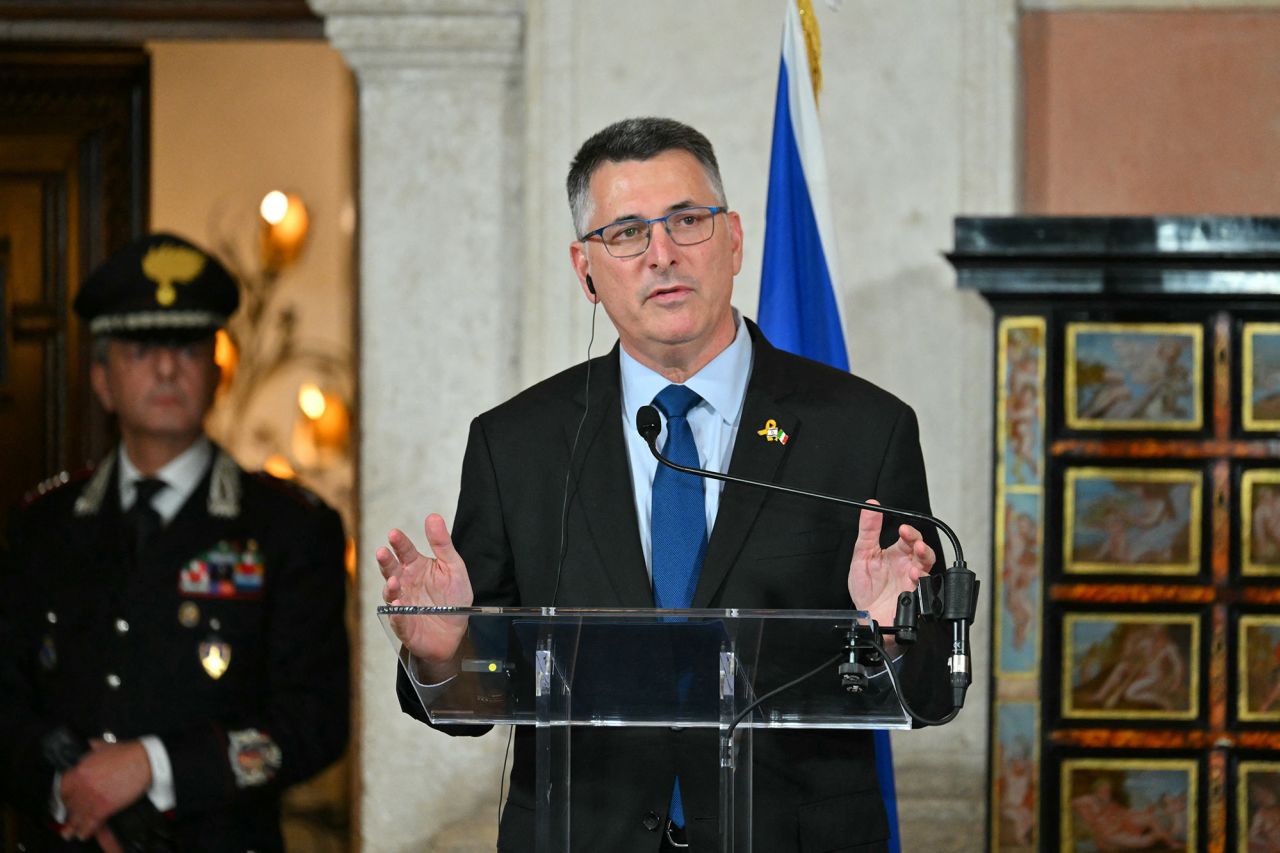TEL AVIV, Israel – The first three hostages released under a new ceasefire and hostage exchange agreement between Israel and Hamas arrived at Sheba Medical Center in Tel Aviv on Sunday, January 19, 2025, marking an emotional milestone for families and supporters who have waited months for their return.
The helicopters, carrying Romi Gonen, Doron Steinbrecher, and Emily Damari, took off from southern Israel near the Gaza border.
The three women, kidnapped during Hamas’s attack on October 7, 2023, were greeted by a crowd of well-wishers holding signs and chanting their names.

A Moment of Joy Amidst Tragedy
Footage released by the Israeli government showed the women draped in Israeli flags, embracing their families upon arrival at the medical facility.
Outside the hospital, Israelis sang patriotic songs and cheered as medical vehicles transported the hostages from the helicopters.
“How good is it that you’ve come home,” read a sign held by a young girl standing with her mother near the hospital’s helipad.
In Tel Aviv’s Hostages Square, a wave of applause and tears swept through the crowd as news of the release was confirmed via a live broadcast.
“Romi is coming back! Emily is coming back! Doron is coming back!” chanted a group in the square.
Tania Coen-Uzzielli, director of the Tel Aviv Museum of Art, which overlooks Hostages Square, described the moment as “unbelievable”.
“We were waiting for this moment since the last release, which was more than one year ago,” she said. “Everybody is crying.”

Hostage Exchange Details
In exchange for the hostages, Israel is releasing 90 Palestinian detainees, including 69 women and nine minors.
The youngest detainee is just 15 years old.
The agreement brokered with the help of mediators from Egypt, Qatar, and the United States, is the first phase of a six-week process expected to free a total of 33 hostages gradually.
The Devastating Toll of War
The ceasefire comes after 15 months of war in Gaza, which began following Hamas’s October 7 attack that killed over 1,200 Israelis and took more than 250 hostages.
In Gaza, the conflict has resulted in nearly 47,000 deaths and displaced almost the entire population of over 2 million people, according to the Palestinian Ministry of Health.
The war has caused widespread destruction, creating a spiraling humanitarian crisis.

A Temporary Ceasefire
Israeli Foreign Minister Gideon Sa’ar, in an interview with CNN, stressed that the ceasefire is temporary, with negotiations for the second phase of the agreement set to begin in two weeks.
“It is not automatic to move from one phase to the other,” Sa’ar said, indicating that further releases would depend on the success of the current arrangement.
Coen-Uzzielli expressed hope that the international community would push for the continued release of hostages and an end to the conflict.
“I really hope that an international force will influence the ultimate decision to continue the release of the hostages and to stop this tragic war,” she said.
The Road Ahead
As the first phase of the agreement unfolds, many Israelis remain committed to ensuring that all hostages are returned.
For Mai, a woman waiting in Hostages Square, the moment was bittersweet:
“We can breathe a little more again,” she said. “And we are going to be here until the very last one comes back.”
While the ceasefire offers a glimmer of hope, the road to peace and recovery for both Israelis and Palestinians remains fraught with challenges.







